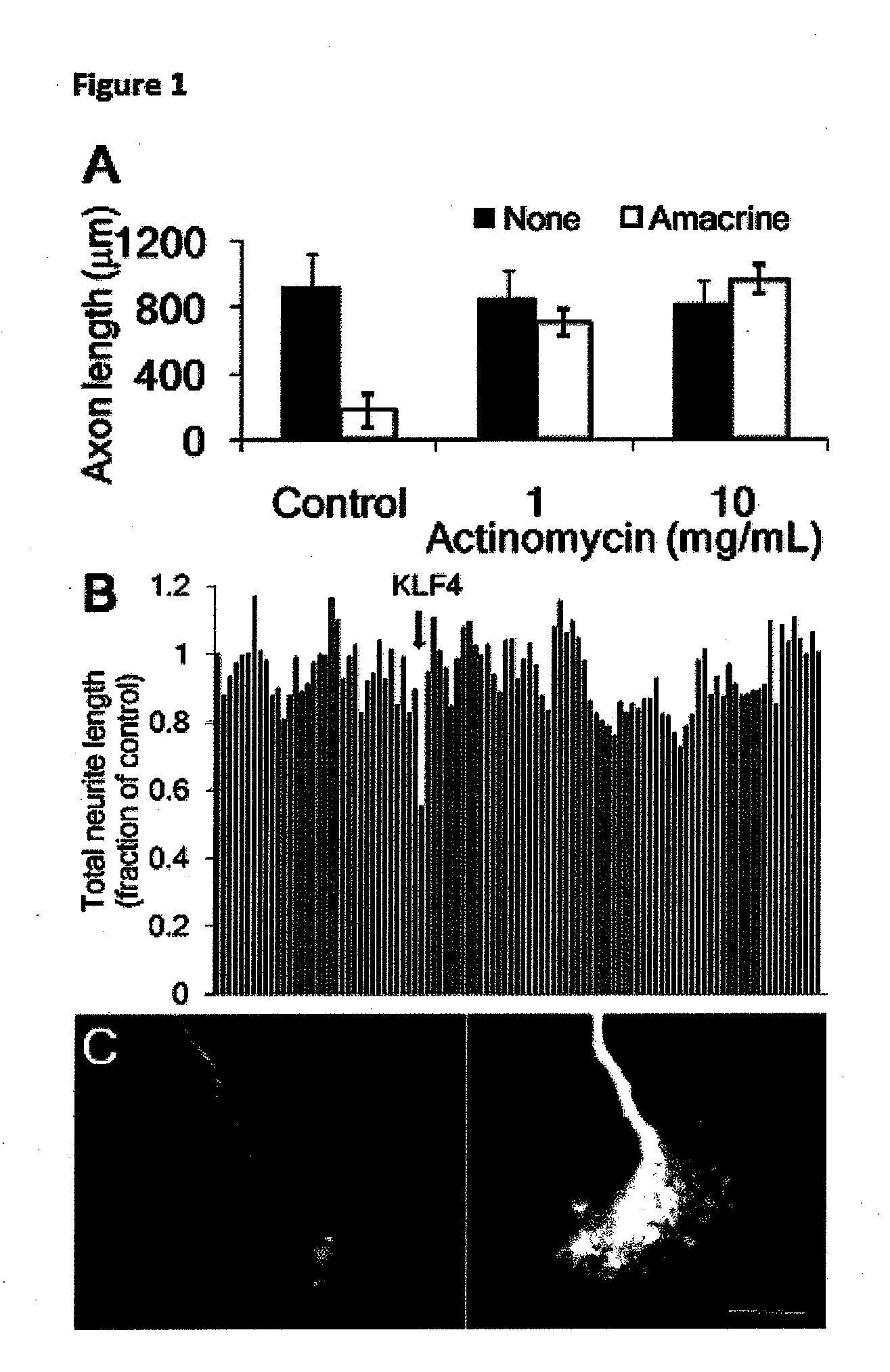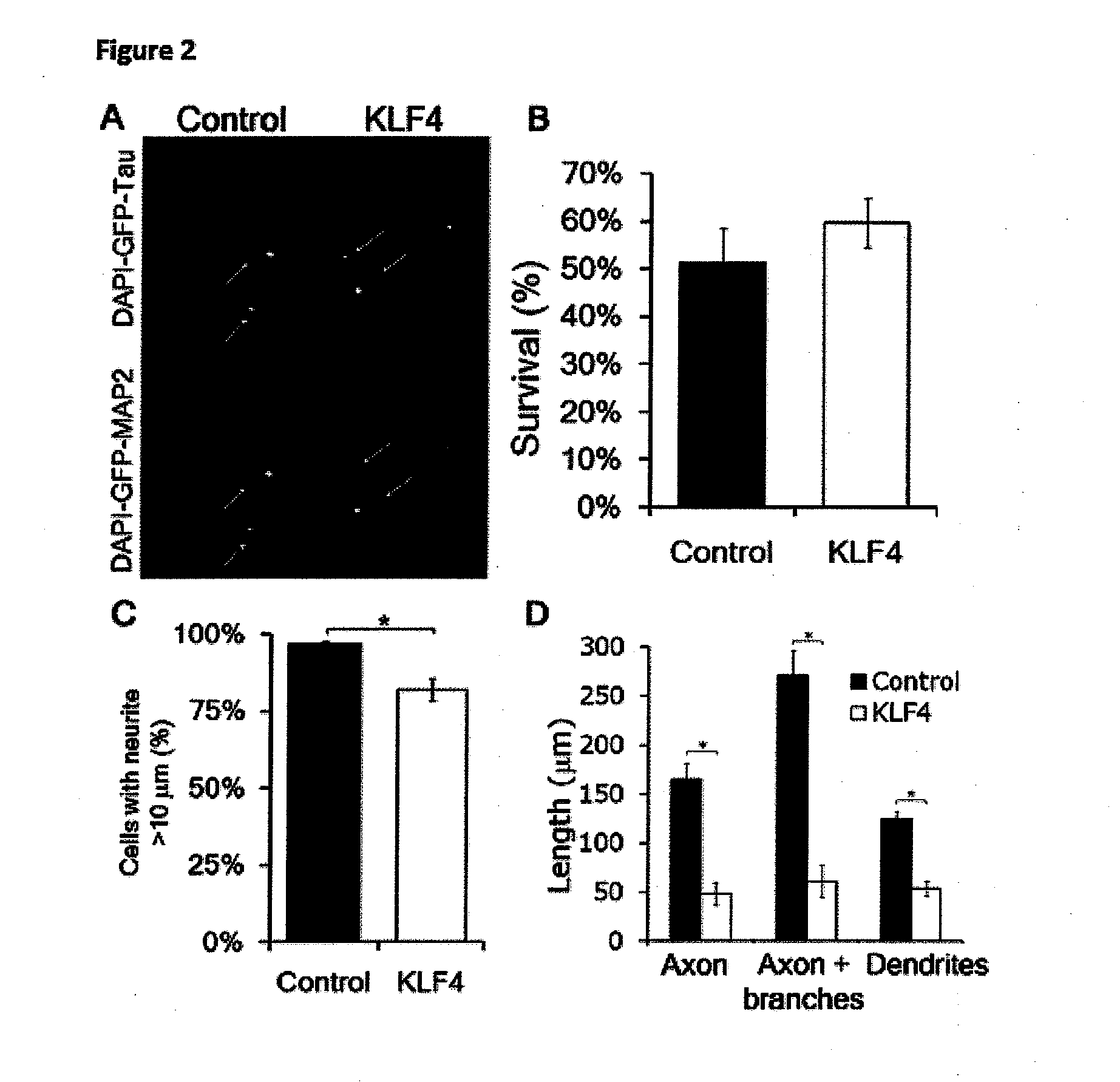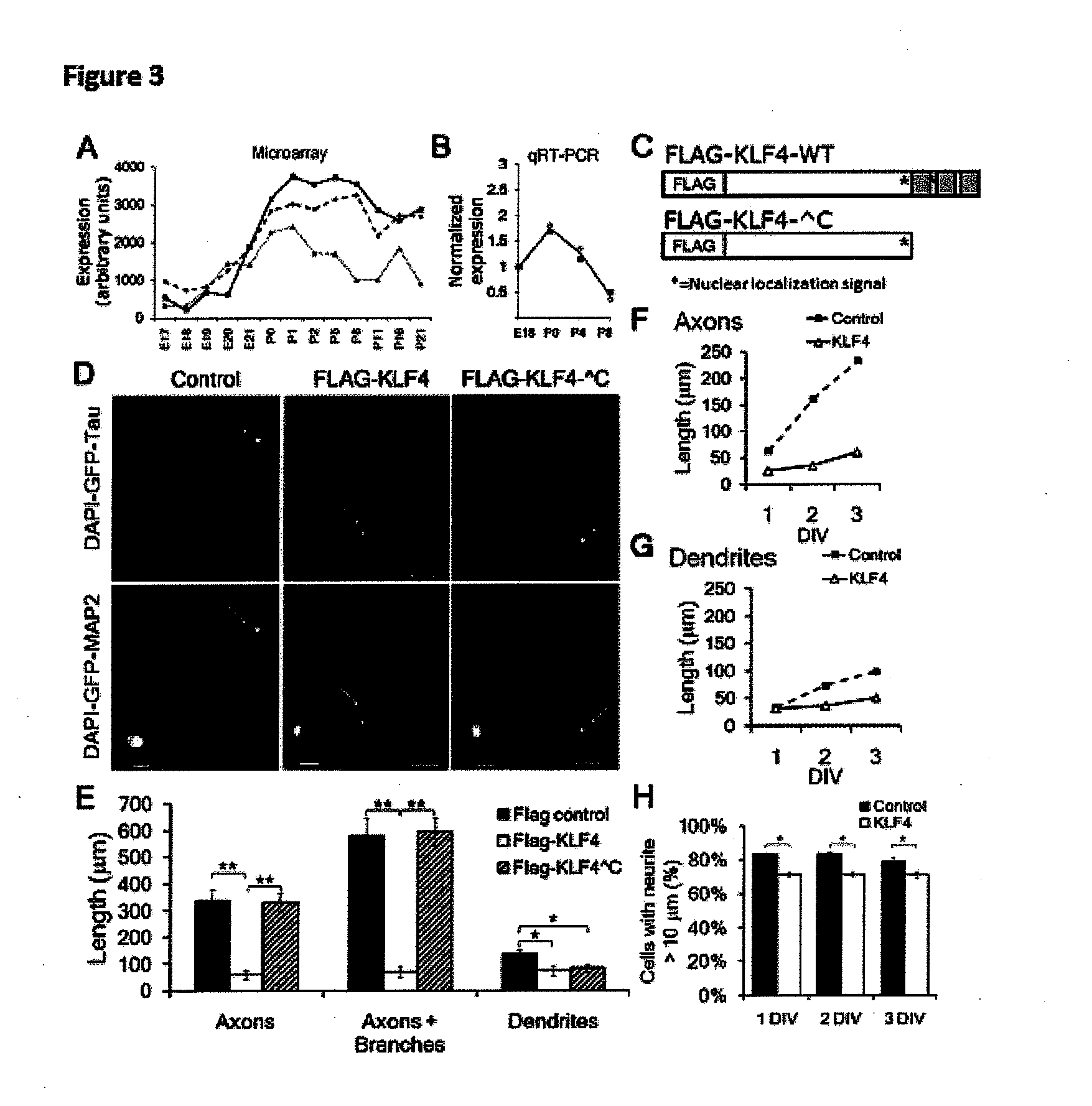Klf family members regulate intrinsic axon regeneration ability
a technology of intrinsic axon and klf family, which is applied in the direction of antibody medical ingredients, peptide/protein ingredients, metabolic disorders, etc., can solve the problems of regeneration failure, developmental loss of intrinsic axon growth capacity of neurons,
- Summary
- Abstract
- Description
- Claims
- Application Information
AI Technical Summary
Benefits of technology
Problems solved by technology
Method used
Image
Examples
example i
Materials and Methods
Constructs for Transfection
[0098]For the screen in hippocampal neurons, constructs in pEXPRESS-1, pSPORT or pCMV-SPORT6 (Open Biosystems) were co-transfected with pMAX (EGFP, Amaxa), and compared to an empty vector / pMAX co-transfection. The purchased constructs for the screen were full-length rat cDNAs (19 / 111, 17%), or else mouse (73%) or human (10%) when the full-length rat cDNA was unavailable.
[0099]Flag-tagged KLF4 constructs in a CS2+ vector were a generous gift of Chunming Liu (Univ of Texas). The flag control vector was purchased from Genecopoeia. Mouse KLF4 (Open Biosystems) and mCherry (gift of Roger Tsien, UCSD) were cloned into the pIRES2-eGFP vector (Clontech).
[0100]KLFs -1, -4, -5, -6, -7, -10, -12, -15, and -17 were obtained from Open Biosystems. KLF2 was a kind gift from Jerry Lingrel, Univ. of Cincinnati. The open reading frame of KLF9 was cloned from postnatal rat cortex, and KLFs -3, -8, -11, -13, -14, and -16 were cloned from mouse spleen or t...
example ii
KLF Family Members Regulate Intrinsic Axon Regeneration Ability
[0127]To investigate the molecular basis for the developmental loss of axon growth ability in RGCs, we took advantage of the fact that co-culture with amacrine cell membranes is sufficient to signal embryonic RGCs to decrease their rapid axon growth (Goldberg et al. (2002), supra). Addition of the transcriptional inhibitor actinomycin D blocked this effect of amacrine membranes, and embryonic RGCs retained their capacity for axon growth (FIG. 1A). These data suggest that gene transcription is required for the developmental loss of intrinsic axon growth ability in RGCs.
[0128]To identify candidate genes, we profiled gene expression from embryonic day 17 (E17) through postnatal day 21 (P21) RGCs (Wang et al. (2007), supra), spanning the period when axon growth ability declines in vivo (Goldberg et al. (2002), supra; Chen et al. (1997), supra). We screened 111 candidates whose expression changed greater than 3-fold by overex...
example iii
Further Experiments Showing that KLF Family Members Regulate Intrinsic Axon Regeneration Ability
1. KLF4 Overexpression in Hippocampal Neurons Decreases Neurite Growth and Neurite Initiation.
[0136]The results of this study are shown in FIG. 7. A-D) E18 hippocampal neurons were co-transfected with KLF4 or control plus EGFP, cultured on laminin-coated plates, and immunostained for Tau (neurites) and MAP2 (dendrites). A) There was no difference in survival by nuclear morphology and DAPI intensity between control- and KLF4-transfected neurons (Mean±SD). B) Transfected EGFP+ cells (arrows) were imaged to detect DAPI, EGFP, and either Tau (top) or MAP2 (bottom). KLF4-transfected neurons had shorter axons and dendrites. (Scale bar, 50 μm) C) KLF4 overexpression decreased the percentage of transfected neurons that were able to extend at least 1 neurite >10 μm (N=5; *p<0.01, paired t-test; mean±SEM). D) KLF4 overexpression decreased both axon (Tau+ / MAP2−) and dendrite (MAP2+) length (*p<0.01,...
PUM
| Property | Measurement | Unit |
|---|---|---|
| pH | aaaaa | aaaaa |
| temperature | aaaaa | aaaaa |
| length analysis | aaaaa | aaaaa |
Abstract
Description
Claims
Application Information
 Login to View More
Login to View More - R&D
- Intellectual Property
- Life Sciences
- Materials
- Tech Scout
- Unparalleled Data Quality
- Higher Quality Content
- 60% Fewer Hallucinations
Browse by: Latest US Patents, China's latest patents, Technical Efficacy Thesaurus, Application Domain, Technology Topic, Popular Technical Reports.
© 2025 PatSnap. All rights reserved.Legal|Privacy policy|Modern Slavery Act Transparency Statement|Sitemap|About US| Contact US: help@patsnap.com



